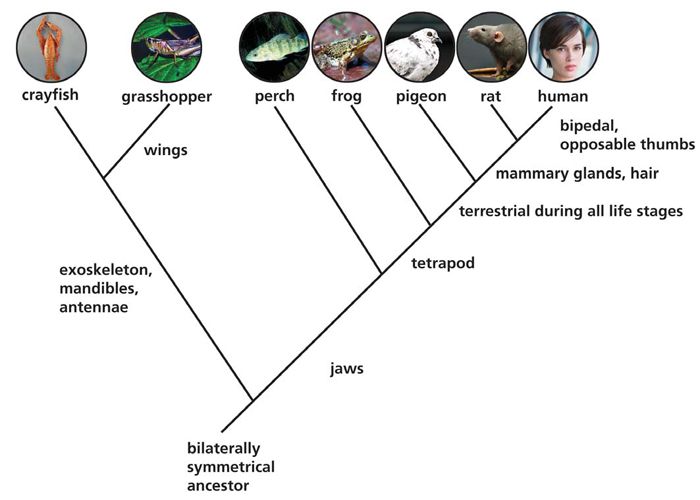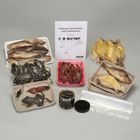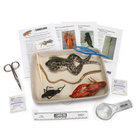Comparative Anatomy
Gordon Reese
Product Manager, Preserved Materials and Prepared Slides
Background
One of the ways in which scientists study organisms is based on comparisons of the anatomical structures among species. This practice is known as comparative anatomy. Through the study of comparative anatomy, scientists have been able to gather evidence about the evolution and relatedness of organisms. Specific anatomical features of organisms provide clues about the special adaptations organisms have evolved in order to survive in their environments.
Comparative anatomy has been a recognized scientific study since the 17th century. In 1698, Edward Tyson wrote the book, The Anatomy of a Pygmie Compared with that of a Monkey, an Ape, and a Man, in which he concluded that chimpanzees are more similar to humans than to monkeys by comparing their arms. The shape and relative size of the bones in the arms were very similar to each other.
Homologous and analogous structures
A dissection activity is a very effective method to observe and study comparative anatomy. While examining the external anatomy and the dissection and study of the internal anatomy, look for “homologous structures” and “analogous structures.” Homologous structures are structures that are similar in different species that descended from a common ancestor. These structures do not necessarily perform the same function. Consider the forelimbs of 3 very different mammals. The forelimbs of the cat, bat, and whale all have similar bone structure, but the forelimbs perform very different functions. Alternatively, structures of organisms that are similar, but evolved distinctly in different ancestors, are called analogous structures. These structures are similar because of the environment. For example, a bat's wing is very similar to a bird's wing, but each wing evolved in a different ancestor to suit the adaptation of flight.
A basic comparative animal anatomy study can be carried out through the dissection of a rat, shark, frog, and pig. Compare the limbs, integument, sensory organs and structures, and organ systems. Notice the features that all organisms share that identify them as belonging to Kingdom Animalia; bilateral symmetry, a vertebral column, and a cranium are readily apparent. Notice that the lungs of the frog are proportionally smaller than those of the rat and pig. The shark lacks lungs entirely and has gills. What are the differences in the environment that might account for this? Comparative anatomy—a study of questioning and discovering the similarities and differences—naturally lends itself to inquiry-based teaching.
Cladistics
Cladistics is the classification of organisms based on similarities. A model of cladistics that can be used to organize your findings from a comparative anatomy study is the cladogram. A cladogram is organized much like a tree, with a common ancestor at the base of the tree and the extant organisms at the top of the tree branches. The path of the branching indicates the similarities and interrelatedness of the organisms. The fewer branching points between organisms, the more similar they are, and the more closely they are related.

Related resources
Carolina Biological Supply Company has a number of dissection kits to help teach comparative anatomy, based on the type of organisms to be compared. Some options include:
- Mixed Fish Set (item #226555)
- Inquiries in Science®: Observing Form and Function Kit (item #251016)
- Carolina's Young Scientist™ Animal Dissection Kit (item #221021)
- Comparative Animal Dissection Kit (item #221030)
- Comparative Circulatory System Kit (item #221047)
- Studying Classification with Cladograms Kit (item #221040)
Keep a lookout for a new kit from Carolina aimed at examining vertebrates. Find the kit that will work best for your classroom at Carolina.com.












